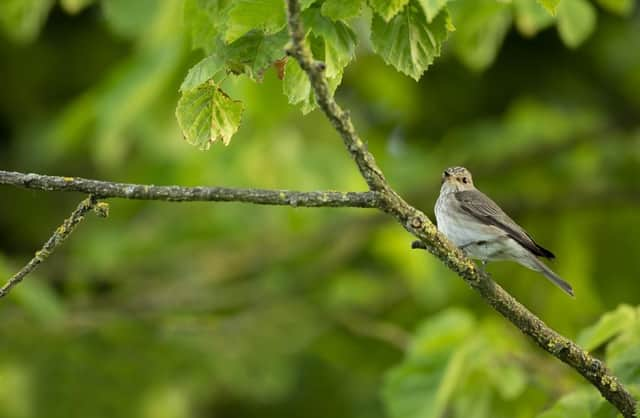RSPB NI: Help to bring nature back from the brink


Last Sunday, Sir David Attenborough took us on a magical tour of our woodlands on the BBC One programme ‘Wild Isles’ and I was captivated! From mind-blowing fungal networks to acrobatic red squirrels, it really showed how our forested landscapes are brimming with life.
I spoke to conservation officer Dakota Reid at RSPB NI, who shared some incredible knowledge about woodland in Northern Ireland and how it’s in trouble.
Advertisement
Hide AdAdvertisement
Hide AdAt only eight per cent, Northern Ireland has the lowest levels of tree cover in the UK, making it one of the least wooded countries in Europe, Dakota shared that much of our remaining woodland is not in great condition, which is having a negative effect on many of our woodland birds such as spotted flycatchers which are now in decline and have made it onto the amber list in Ireland.
The majority of tree cover in the country is made up of non-native conifer plantations, and they provide little habitat for our wildlife. This is why it’s important to do more tree planting; for people, for nature and importantly, for the climate. But it needs to be the right tree in the right place in order to make a difference.
If you’re thinking of planting a tree for nature, consider a beautiful native broadleaved tree species, such as oak or hawthorn. Beneficial not just for birds, but for insects who need native trees in order to survive.
A single oak tree creates a complex ecosystem that supports a variety of life, from caterpillars of the purple hairstreak butterfly who only feed on oak, to birds like the jay. The jay is a real acorn enthusiast, burying any it can’t eat to store them for later. It remembers where most of them are, but any left behind have the chance to grow into new oak trees.
Advertisement
Hide AdAdvertisement
Hide AdWant to hear more about you help save our wild isles? RSPB, WWF and the National Trust are working together to bring nature back from the brink. But they need everyone to act, if we all work together, nature can begin to thrive.
Sign up at www.saveourwildisles.org.uk to get regular updates packed with lots of ways you can go wild once a week and take action for nature.